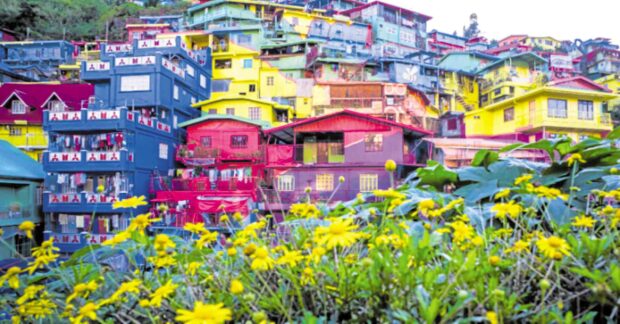Baguio City in Benguet province remains as one of the most famous cities in the Philippines.
Touted as the “Summer Capital of the Philippines”, this city has gained renown not only as a prime tourist area, but also as an investment destination for businesses looking to expand their market, and as an ideal residential location for those who crave cooler climates and panoramic views.
From November to May, local and foreign tourists travel to Baguio to experience the cool and refreshing weather of the hills. Even at its warmest, Baguio City seldom exceeds 26 degrees centigrade. In fact, the Supreme Court and the Court of Appeals still hold summer sessions in the city every April. During the rainy season, from June to October, the city gets the biggest amount of rainfall in the country—twice the volume in Manila.
Economic potential
Historically, Baguio City has always attracted developments because of its climate and economic potential.
In the early 1900s, American architect and city planner Daniel Burnham was tasked to design Baguio, which was declared as a chartered city by the American colonial government in 1909. It served as a hill station and summer government site for American officials who needed to escape the heat of Manila during the dry season.
Among the first to be developed were the nearby mines, which contributed to the economic potential of the city. Businesses in the city flourished as commercial centers and recreation facilities were put up. The city was growing and though there have been changes in the actual layout and construction of streets, residences, and public buildings, the Burnham Plan served as a powerful blueprint for the organization of space within Baguio City, and was considered as one of the pioneering city planning programs in the country.
Destruction
The city, however, faced destruction before it became the progressive, highly urbanized city it is known today.
During World War II, Baguio City was among the first areas to be attacked by the Japanese army. In 1990, a 7.8-magnitude earthquake left the city isolated for days, with 28 buildings and 130 houses destroyed beyond repair and with thousands of people dead. The July 1990 killer earthquake was said to be the most destructive earthquake on record within the Cordillera Region.
Proving the resilience, discipline and determination of the people of Baguio, the city eventually recovered and developed into the commercial, educational, and recreational center of the Cordillera and Northern Luzon.
Melting pot
Today, Baguio City, located approximately 250 km north of Manila, has become a melting pot of cultures, attracting tourists, businesses, as well as migrants and students, owing to its improved infrastructure, well-preserved heritage, and burgeoning array of establishments and institutions.
In terms of education opportunities, Baguio City is home to notable schools and universities including University of the Philippines Baguio, University of Baguio, Saint Louis University, Baguio Central University, Easter College, University of the Cordilleras, Brent International School Baguio.
For businesses, the city presents not only lucrative prospects but also a conducive investment climate. Baguio City was named the most competitive highly urbanized city in Northern Luzon and ranked 17th overall in the country, based on the 2022 Cities and Municipalities Competitiveness Index.
In December 2023, Aldrin Federico Bahit Jr., chief statistical specialist of the Philippine Statistics Authority (PSA) in Cordillera, said in a briefing that the economy of Baguio City had already surpassed in 2022 its pre-pandemic growth rate, making it one of the communities that have overcome the social and financial impact of COVID-19. In 2022, its gross domestic product rose by 11.3 percent, up from the 10 percent expansion it recorded in 2021.
Impetus for growth
Bahit reported that tourism-oriented shops and enterprises appeared to have also influenced the city’s steady economic growth, which had “cut across three major industries from transportation to manufacturing, which includes the production of pasalubong (souvenirs).”
The city’s industry sector (P83.9 billion, largely from the economic zone in Baguio), services sector (P225.64 billion) to include accommodations and restaurants, and agricultural services (P28.12 billion) grew in 2022, with “the services sector reflecting the fastest acceleration,” Bahit said.
Among the famous tourist spots in Baguio City include the Baguio Botanical Garden, Burnham Park, Heritage Hill and Nature Park Garden, Mines View Park, Session Road, and The Mansion. There’s also the St. Francis Xavier Bamboo Sanctuary, Mirador Hill, Baguio Cathedral, and the Shanum Tan Belbel (Pool of Pines), while the Museo Kordilyera, Baguio Museum, Igorot Park, Ili-likha Artists Watering Hole, and the Tam-awan Village showcase the rich culture and heritage of Baguio City.
Festivals in Baguio City, the most popular of which would be the Panagbenga or Baguio Flower Festival, also continue to draw a huge number of tourists every February.
Sources: Inquirer Archives, new.baguio.gov.ph
